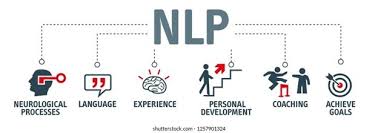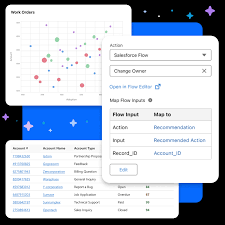What is Natural Language Processing (NLP)?
Natural Language Processing (NLP) is a branch of artificial intelligence (AI) that enables computers to interpret, analyze, and generate human language. By leveraging machine learning, computational linguistics, and deep learning, NLP helps machines understand written and spoken words, making communication between humans and computers more seamless.
I apologize folks. I am feeling like the unicorn who missed the Ark. Tectonic has been providing you with tons of great material on artificial intelligence, but we left out a basic building block. Without further ado, Natural Language Processing Explained.
Like a lot of components of AI, we often are using it without knowing we are using it.
NLP is widely used in everyday applications such as:
- Voice Assistants: Platforms like Amazon’s Alexa, Apple’s Siri, and Google Assistant rely on NLP to understand voice commands.
- Email Spam Filters: NLP helps identify and filter out spam in email systems.
- Translation Tools: Apps like Google Translate use NLP to provide accurate translations between languages.
- Search Engines: NLP powers search engines to better understand user queries.
- Chatbots: NLP is at the core of chatbots, which are used for customer service and other conversational interfaces.
- GPS Systems: Voice-operated GPS systems use NLP to interpret and respond to spoken directions.
How Does NLP Work?
Natural Language Processing combines several techniques, including computational linguistics, machine learning, and deep learning. It works by breaking down language into smaller components, analyzing these components, and then drawing conclusions based on patterns.
If you have ever read a first grader’s reading primer it is the same thing. Learn a little three letter word. Recognize the meaning of the word. Understand it in the greater context of the sentence.
Key NLP preprocessing steps include:
- Lowercasing: Standardizing text by converting it to lowercase.
- Stemming: Reducing words to their root form by removing suffixes (e.g., “running” becomes “run”).
- Lemmatization: Converting words to their base or dictionary form (e.g., “better” becomes “good”).
- Tokenization: Splitting text into smaller units, such as words or phrases.
- Stop Word Removal: Removing common words like “the” or “and” that don’t add significant meaning to the analysis.
Why Is NLP Important?
NLP plays a vital role in automating and improving human-computer interactions by enabling systems to interpret, process, and respond to vast amounts of textual and spoken data. By automating tasks like sentiment analysis, content classification, and question answering, NLP boosts efficiency and accuracy across industries.
For example:
- Customer Support: Chatbots powered by NLP can handle routine customer inquiries, freeing human agents to focus on more complex issues.
- Document Processing: NLP can be used to scan and archive large volumes of documents quickly and accurately.
- Sentiment Analysis: Businesses use NLP tools to gauge customer opinions by analyzing reviews and feedback.
Key Use Cases of NLP in Business
- Data Redaction: Sectors like healthcare, legal, and insurance use NLP to redact sensitive information from documents. For example, Chisel AI helps insurance carriers extract and anonymize personal data.
- Customer Engagement: NLP powers chatbots that engage in human-like conversations. PubNub uses NLP to support localized chat functions, while T-Mobile uses it to personalize responses based on customer queries.
- Business Analytics: Tools like Amazon Comprehend analyze customer feedback to assess sentiment and derive actionable insights, helping companies understand customer attitudes toward their products and services.
NLP Tasks
NLP enables machines to handle various language tasks, including:
- Part-of-Speech Tagging: Assigning grammatical tags (e.g., noun, verb) to words in a sentence to help systems understand context.
- Word-Sense Disambiguation: Determining the intended meaning of words with multiple definitions (e.g., “bat” as an animal vs. “bat” used in sports).
- Speech Recognition: Converting spoken language into text, useful for transcription and voice-activated systems.
- Machine Translation: Automatically translating text or speech between languages while maintaining context.
- Named Entity Recognition: Identifying names, places, dates, and other specific entities within text.
- Sentiment Analysis: Classifying text based on emotional tone, such as positive, negative, or neutral sentiments.
Approaches to NLP
- Supervised Learning: NLP models are trained on labeled datasets where the correct outputs are known.
- Unsupervised Learning: The software learns patterns from unlabeled data, such as suggesting word completions in messaging apps.
Future of NLP
NLP is becoming more integral in daily life as technology improves. From customer service chatbots to medical record summarization, NLP continues to evolve, but challenges remain, including improving coherence and reducing biases in machine-generated text.
Essentially, NLP transforms the way machines and humans interact, making technology more intuitive and accessible across a range of industries.
By Tectonic Solutions Architect – Shannan Hearne













